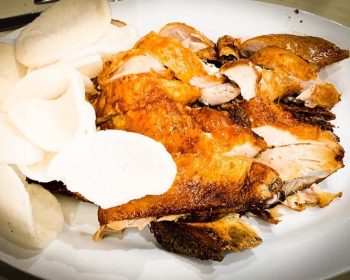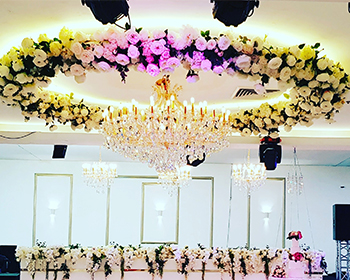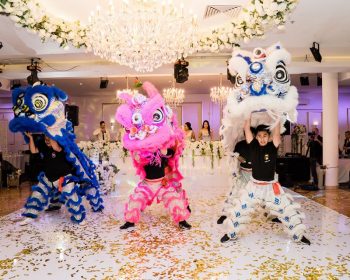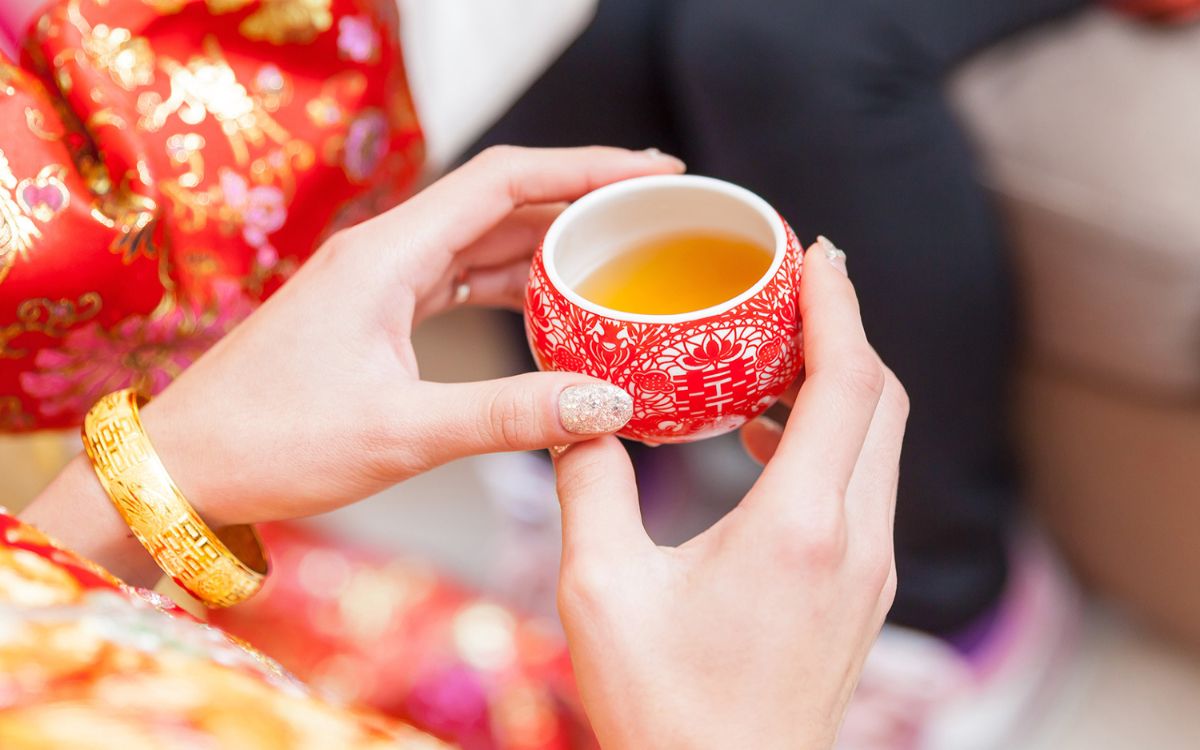Chinese weddings are rich with symbolism, tradition, and meaningful rituals that recognise love, family, and artistic heritage. Understanding these time-recognised practices can add depth and significance to your big day if you plan a Chinese wedding or incorporate Chinese elements into your festivity. Here are ten Chinese wedding traditions to consider when planning your wedding.
1. The Proposal and Betrothal Gifts
In traditional Chinese weddings, the offer is a formal affair involving the groom’s family visiting the bride’s family to present betrothal gifts. These gifts, which symbolise goodwill and respect, include tea, wine, fruits, and jewelry. The bride’s family reciprocates with a set of gifts in return. While modern couples frequently abstain from the elaborate exchange, this tradition can be a beautiful way to recognise family values and artistic heritage.
2. The Wedding Date Selection
Chinese culture strongly emphasises choosing an auspicious wedding date based on the lunar calendar. Couples frequently consult a Feng Shui master or astrologer to determine the most favourable day for their wedding. Factors such as the couple’s birth dates, the positions of the stars, and the lunar cycle are taken into consideration to confirm a harmonious and prosperous future together.
3. The Tea Ceremony
The Chinese tea ceremony is a central element of a traditional Chinese wedding, symbolising respect and gratitude toward the couple’s parents and elders. During the ceremony, the bride and groom kneel and serve tea to their parents and other close family members. This act of serving tea signifies the couple’s appreciation and acknowledgment of the sacrifices made by their families. In return, the couple receives blessings, gifts, and red envelopes containing money (” hongbao”).
4. The Bride’s Dowry
Historically, the bride’s dowry was a collection of precious particulars blessed to the couple, symbolising the bride’s family’s donation to the wedding. While the dowry tradition has evolved, it’s still customary for the bride’s family to give useful particulars for the couple’s new life together. This might include household goods, jewellery, or modern appliances. Incorporating elements of the dowry into your wedding plans can add a meaningful touch.
5. The Color Red
In Chinese culture, red is associated with luck, happiness, and substance, making it an important colour in weddings. Numerous misters wear a red qipao or cheongsam, a traditional Chinese dress, either during the wedding form or the event. Red is also generally used in the wedding décor, from red lanterns to red envelopes given to the couple. Incorporating this vibrant colour into your wedding can reflect the joyful and celebratory nature of the occasion.
6. The hair-digging form
The hair-digging form is a pre-wedding ritual performed the night before the wedding. It’s a symbolic incoming-of-age ritual for both the bride and bachelor, marking their transition from nonage to the majority and their readiness for the wedding. A close family member performs the form, generally the mama or grandmother, who combs the bride or bachelor’s hair four times. Each stroke carries a different blessing, similar to harmony, life, and substance.
7. The Procession and Door Games
Traditionally, the bachelor and his family arrive in a grand procession at the bride’s home. The groom, accompanied by a convoy of friends and family, must” win” the bride by completing a series of door games set up by the bridesmaids. These sportful challenges symbolise the bachelor’s love and determination to be with his bride. Once the bachelor completes the games, he can enter and take his bride to the wedding venue.
8. The wedding Banquet
A Chinese wedding feed is a lavish festivity that frequently includes multiple courses of symbolic dishes. Each dish represents different blessings for the couple, similar to wealth, fertility, and happiness. Common dishes include whole fish (for abundance), roast pig (for purity), and sweet lotus seeds (for fertility). The feed is a time for family and friends to gather and partake in the couple’s joy, with the food serving as a symbol of substance and good fortune for the newlyweds.
9. The Red Umbrella and Firecrackers
As the bride leaves her family’s home for the wedding venue, she’s frequently accompanied by someone holding a red marquee over her head. The red marquee symbolises protection and fending off evil spirits. Also, firecrackers are set off to scare down bad luck and ensure a prosperous future for the couple. These lively customs add excitement and artistic significance to the wedding day.
10. The Three Letters and Six Etiquettes
Known as the” San Shu Liu Li,” this ancient custom involves three letters and six etiquettes changed between the bride and groom’s families during the engagement period. The three letters include an offer letter, an espousal letter, and a wedding letter. The six etiquette relate to the traditional way of getting involved in the wedding process, including transferring betrothal gifts and performing the tea form. While this tradition may be a more symbolic moment, incorporating aspects of the San Shu Liu Li can bring a sense of history and tradition to your wedding.
Let Liberty Palace Produce The Perfect Festivity!
Planning a wedding steeped in tradition and fineness? Let Liberty Palace help you produce the perfect festivity by incorporating traditional Chinese wedding traditions. From the tea form to the grand feed, we ensure every detail reflects your culture and love story. Contact Liberty Palace today to start planning your dream wedding with us!




